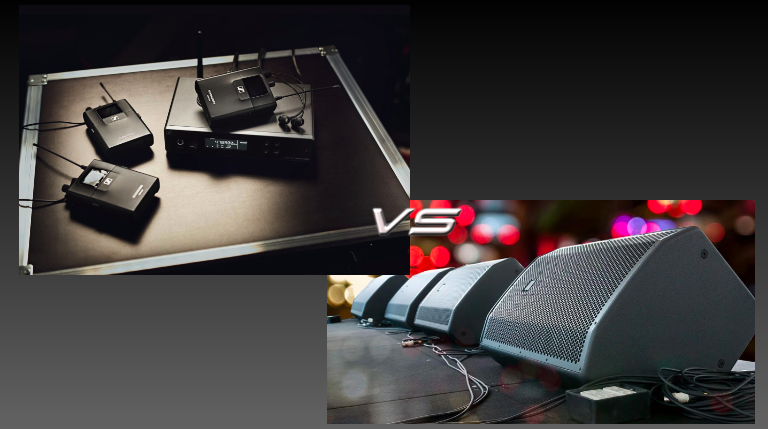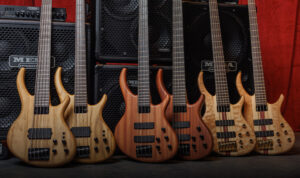Why In-Ear Monitors Are Better Than Wedge Monitors (For Most Musicians)
If you’ve ever played a live show — or even watched one up close — you’ve probably seen those big speakers sitting on the stage floor, tilted up toward the band. Those are called wedge monitors or floor monitors. They help musicians hear themselves during a performance.
But there’s a new favorite in town: in-ear monitors (IEMs). These tiny earbuds are becoming the go-to choice for artists everywhere, from local bands to major touring acts.
So, what makes in-ear monitors better than wedge monitors?
Let’s break it down.
1. Clearer Sound Just for You
With wedge monitors, sound can get lost in the chaos of the stage. Drums, amps, and other instruments all blend together — and it can be hard to hear what you actually need.
IEMs give you a personalized mix, right in your ears. You can hear your vocals, your bass, your click track — whatever you want — without being drowned out.
2. Lower Stage Volume = Better for Everyone
Wedges are loud. And when one musician turns theirs up, the next one wants to go louder. Before long, the stage is a mess of noise.
In-ear monitors keep the volume off the stage, which:
Reduces feedback
Makes it easier for the audience to hear a clean mix
Helps the front of house (FOH) engineer do their job
3. Protect Your Hearing
Musicians are exposed to dangerously loud sound levels, especially near drums or amps.
IEMs seal off the outside world and deliver your mix at a safer volume. Many even have built-in limiters to prevent sudden loud bursts.
Long story short: your ears will thank you later.
4. Move Freely Without Losing Your Mix
With wedges, your sound is tied to a spot on the stage. If you move too far away, the mix changes — or disappears.
IEMs go with you. Whether you’re head banging, dancing, or running across the stage, your mix stays the same in both ears.
5. Less Gear, Less Clutter
Wedges are big. They take up space, need power, and add more cables to your setup. IEMs are small, wireless, and easy to pack — especially important for traveling bands or small stages.
6. Hear What the Audience Can’t
Want to hear a click track? A backing track? A count-in from the drummer?
With IEMs, you can run a private mix that the audience never hears. This lets your band stay tight, on tempo, and sounding polished — even when playing complex arrangements.
But What About Feeling the Stage?
One downside to IEMs is that they can feel a little “isolating” at first. You don’t get the same rumble and energy of a live stage. But this can be fixed!
Many pros use:
Ambient mics to bring in crowd noise
One ear in, one ear out (though this reduces ear protection)
Vibrating body packs for low-end feel
Final Verdict: In-Ears Win for Most Modern Setups
| Feature | Wedge Monitors | In-Ear Monitors |
|---|---|---|
| Sound Clarity |  Muddy Muddy |  Crystal clear Crystal clear |
| Stage Volume |  Loud Loud |  Quiet Quiet |
| Hearing Safety |  Risky Risky |  Protected Protected |
| Mobility |  Limited Limited |  Full freedom Full freedom |
| Space/Efficiency |  Bulky Bulky |  Compact Compact |
In-ear monitors aren’t just a trend — they’re a smart upgrade for musicians who want better sound, safer shows, and a more professional performance. They might take a little time to get used to, but once you try them, you probably won’t want to go back.


